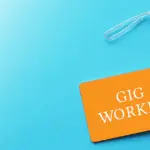The interest in microlearning is on the rise. Organizations are finding success in delivering small “bites” of learning in new and exciting ways. While the concept has been discussed and debated within the learning and development (L&D) community for years, it wasn’t until recently that it really caught on.
Each week our editorial team scours the interwebs of the world in search of the latest and most relevant content created by learning and development (L&D) thought leaders. In this edition of the Weekly L&D Roundup, the focus is microlearning. Specifically, answers to questions like what is microlearning, how effective is this type of learning, and should you replace your traditional eLearning with it?
Here is what you need to know…
Why Microlearning?
According to an often-cited study published in the Journal of Applied Psychology, “Learning in bite-sized pieces makes the transfer of learning from the classroom to the desk 17% more efficient.” In a recent article, Luis Gonzáles, a Master Facilitator for training company Fierce, references these numbers.
He also highlights another interesting statistic shared in another study by Software Advice that claims more than 50% of learners are more engaged when learning content is shorter.
Why you should read? The need to deliver more effective, engaging training faster than ever is a common issue for learning professionals. Microlearning, while not really new, has quickly emerged as one of the big winners in the post-pandemic workplace.
One thing that makes microlearning so attractive to many companies is that this style doesn’t have to be coordinated or scheduled. Learners can consume content whenever it is most convenient.
Gonzáles goes on to explain why he believes microlearning is so important to a company’s success. “Microlearning is not just for the employee level either. It’s also shown to be incredibly effective for leadership development and a strong learning strategy,” he writes.
“More engaged learners are more likely to problem solve on their own instead of going straight to a manager with a question.” So, while he notes microlearning is not a new method, it is a strategy learning leaders can utilize with equal effectiveness at all levels of their organization.
Gonzáles’ honest take on the merits of utilizing bite-sized learning is refreshing. When combined as part of a larger learning strategy, microlearning has the potential to be transformative.
Read the Full Article: What is Microlearning: What You Need to Know & Why You Need to Be Using It
Microlearning: Everything You Need to Know
A recent post on the infographic authoring tool, Venngage’s blog, by Dr. Jiani Wu is one of the most comprehensive overviews of microlearning I’ve read. As a Micro-Adaptive Learning Designer, Dr. Wu starts by explaining the science of how we learn. She details how microlearning can make information easier to digest while also supporting employee behavioral change over time.
Why you should read? Microlearning can be an effective addition to a learning organization’s traininig strategy. However, like most anything there are a lot of differning views which complicate getting up to speed. This article is a great place to start because it covers all the bases.
Dr. Wu continues on, covering best practices, like keeping content to a maximum of three to five minutes. Then she breaks down the four “key elements” of microlearning modules. Each of them: objectives, content, delivery, and evaluation are defined with examples.
The final sections highlight ways designers can combine gamification with microlearning. Dr. Wu first discusses the purpose or goal of each game element that will be used in her scenario. Then she explains how each could potentially fit into a microlearning module.
In the end, everything is summarized perfectly. “Microlearning is a great learning design solution for training managers to deliver on-demand training over a period of time to enhance training retention, facilitate behavior change, and support long-term employee performance.”
It doesn’t matter if you are researching microlearning for the future or looking for best practices and examples you can use now, do yourself a favor and bookmark this one.
Read the Full Article: Microlearning: A Pathway to Effective Training Retention and Behavioral Change
Proof Microlearning Works
We are headed to Australia via Twitter for our next stop. As a self-professed “curious explorer” and lifelong learner, Helen Blunden invites people to observe as she completes a thirty-day journey to learn French. It all started when she came across a tweet. It was a month-long challenge encouraging people to record themselves practicing specific phrases in a foreign language for one minute a day.
Why you should read? If you are looking for successful examples of microlearning in action, you love to learn or are someone who has never met a challenge you could refuse, you will love following Helen Blunden’s journey. She recently embraced a one minute a day challenge to learn a foreign language and documented it.
Blunden loved the idea so much she decided to post her daily recordings on Twitter.
Her recorded lessons are a front-row seat to watch microlearning in action. There is no need to pour through studies looking for statistics or spending days researching the topic enough to articulate a business case justifying microlearning to corporate leadership. Forward the link to Blunden’s article, drop the mic, and take an early lunch because you just nailed it.
The best part of this example is Blunden’s progress from start to finish. It is quite impressive. Not only are her daily tweets a great microlearning case study, but they also represent a highly successful one.
OMG. I FINISHED THE 30 DAY CHALLENGE! Day 30 and a BIG thank you to my friend @MeganStrant where we celebrated this with coffee & cake after a long walk! Merci beaucoup to my French speaker network for sending me DMs with feedback, kudos, encouragement & support to keep going. ? pic.twitter.com/Qe1TA7c7ru
— Helen Blunden #AlwaysBeLearning ????? (@ActivateLearn) April 10, 2021
Blunden kicks things off by sharing some of the learner-centric lessons she learned during the challenge, including:
- There will be days people may not want to complete a lesson
- Knowing there are more lessons can create urgency and boost motivation
- If at first, you don’t succeed try, try again: “If you’re not happy with the result of one day, make more of an effort to do better the next day.”
- Daily repetition can lead to higher confidence – confident learners retain more
- Combining microlearning with other concepts like social learning can be highly effective
If you still aren’t convinced of the merits of microlearning after following Blunden’s journey, you probably never will be.
Read the Full Article: 30 Day Learning Challenge
BONUS: 10 Ways Consultants Can Tame Difficult Clients
There are a lot of pros and cons when it comes to being a consultant or freelancer. One of the more unpleasant downsides is that you are responsible for your own customer relations. Learning Experience Designer, author, and speaker Connie Malamed shares ten tips for consultants to use, making working with ornery clients much easier.
Why you should read? Clients can be demanding, stubborn or even wrong at times. However to be a succesful consultant, you will need to navigate the sometimes treachourous road of client relations.
Her article has many useful tips, some of which I enthusiastically second as I’ve used them myself over the years. There is one, in particular, though, I believe to be the most important one of them all. Malamed writes, “You can avoid some of the most critical client issues by using your most effective listening skills.”
Expanding on her point further, she adds, “Even though your head is spinning with ideas, keep them at bay so you can attend to what your client is saying. Then repeat what he or she said to confirm you’ve understood. The letters that make the word LISTEN also spell SILENT.”
Aside from the handy tips, the underlying message Malamed is making can be summed up in one sentence. Always be listening, but when you speak, be clear, be thorough, conduct yourself professionally, and never forget to cover your backside completely.
Download Your Copy of How Building an eLearning Prototype Saves Time and Money
Ready to Work with Us?
Does your learning and development department have more projects than people? TrainingPros has been named as a Top 20 Staffing Company internationally by Training Industry. Coupling this award with being named a Smartchoice Preferred Provider by Brandon Hall Group for 2025 underscores TrainingPros’ unwavering commitment to delivering high-quality, tailored training solutions. If you need instructional design consultants or learning experience designers for custom content projects, contact one of our industry-expert relationship managers today. When you have more projects than people™, let us find the right consultant to start your project with confidence. Schedule a consultation today.
- 4shares
- LinkedIn1
- Twitter1
- Facebook0
- Love This2









